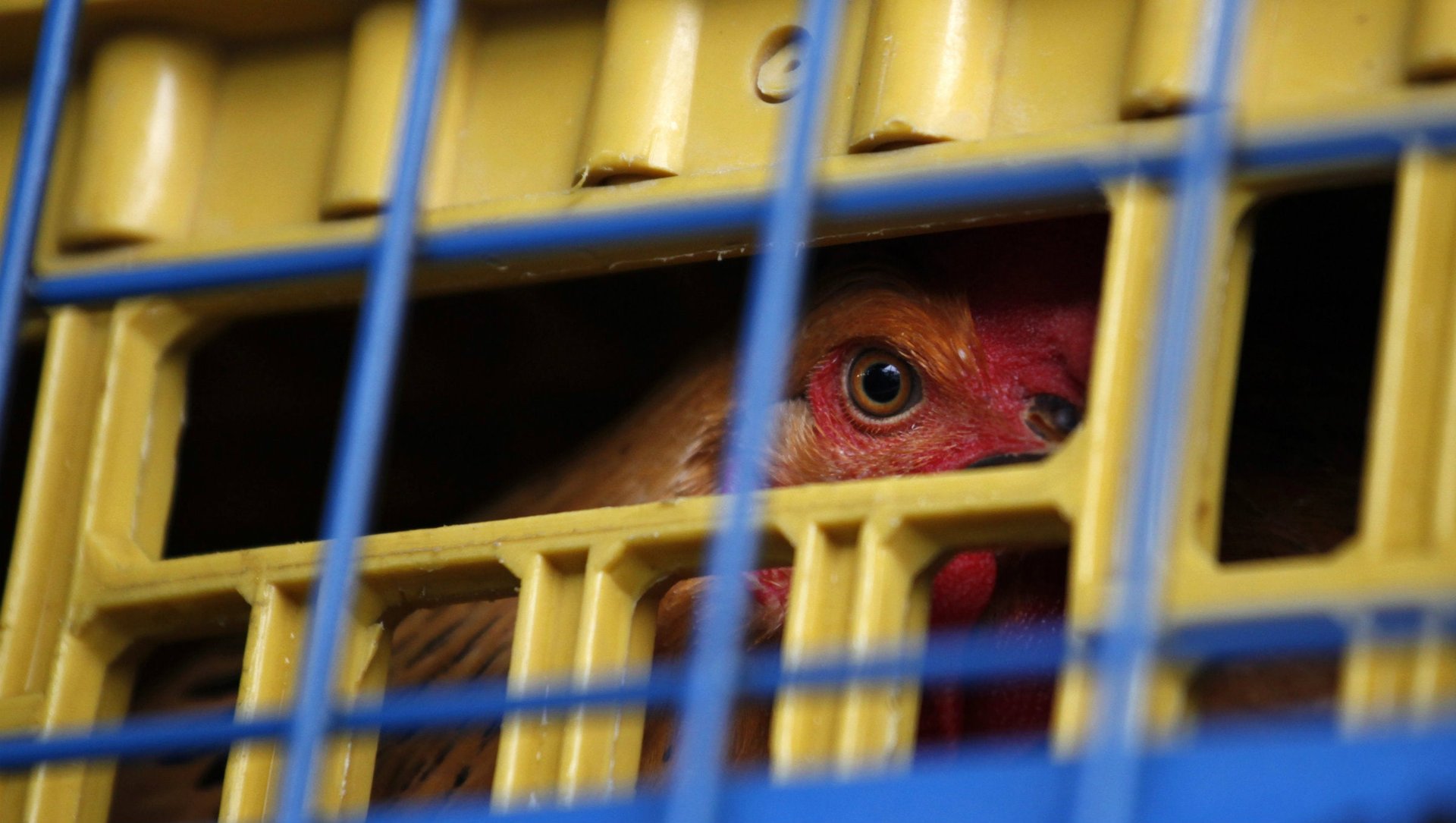Why a single human case of bird flu has Hong Kong spooked
At a press conference held by Hong Kong’s food and health secretary on Dec. 2, the city reported its first-ever human case of H7N9, a strain of bird flu. The patient, a 36-year-old Indonesian woman who lives and works in Hong Kong, is believed to have contracted the flu when she traveled to Shenzhen, on mainland China, where she bought, slaughtered, and ate a chicken. She is in critical condition at a Hong Kong hospital.


At a press conference held by Hong Kong’s food and health secretary on Dec. 2, the city reported its first-ever human case of H7N9, a strain of bird flu. The patient, a 36-year-old Indonesian woman who lives and works in Hong Kong, is believed to have contracted the flu when she traveled to Shenzhen, on mainland China, where she bought, slaughtered, and ate a chicken. She is in critical condition at a Hong Kong hospital.
In response, Hong Kong raised its flu pandemic warning (pdf), saying there is a “moderate” risk of a virus causing “new and serious impact” to human health, although there is no evidence that this strain of bird flu can be passed between humans. The city is limiting visiting hours for influenza patients in the hospital, stepping up inspections of local chicken farms and wholesale poultry markets, and banning imports of live poultry from three farms in Shenzhen.
Why are Hong Kong’s authorities so worried? In part it’s because an H7N9 epidemic is stalking mainland China. Since April of this year, there have been 139 confirmed human cases of H7N9 bird flu in China and 45 deaths from the disease, the Centers for Disease Control and Prevention said last month. A study published in The Lancet in April identified “wet markets,” or markets where live animals are sold for food, as the source. Hong Kong has been closely monitoring people and poultry entering from China since the mainland epidemic this April.
With a limited land mass and a population density of 6,620 people per kilometer, the special administrative region of Hong Kong imports 95% of its food, according to USDA figures. China is the second-largest exporter to Hong Kong, after the United States, and accounts for 17% of Hong Kong’s imports, including much of the poultry that stocks Hong Kong’s many wet markets.
The city has suffered from animal-related virus outbreaks before, particularly the 2003 SARS outbreak, which killed nearly 300 and took a major toll on business. Hong Kong has deployed extreme measures to fight potential outbreaks in the past. In 1997, after identifying 18 people infected with the H5N1 strain of bird flu, the city’s authorities ordered the slaughter of all chickens in the region, some 1.5 million birds, as well as ducks, geese and pigeons.
The H5N1 bird flu virus “remains one of the influenza viruses with pandemic potential, because it continues to circulate widely in some poultry populations, most humans likely have no immunity to it, and it can cause severe disease and death in humans,” the World Health Organization explains. As the authorities in Hong Kong will point out, the city hasn’t seen another case of that strain since it took drastic measures to fight it. It hopes the same will be true with the new variant now threatening its borders.